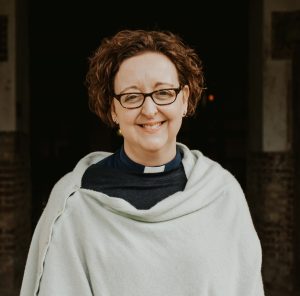 In the season of Advent we live with the promise of God bringing light into the darkness.
In the season of Advent we live with the promise of God bringing light into the darkness.
Romans 13.12 tells us that “The night is nearly over; the day is almost here” and invites us “put aside the deeds of darkness and put on the armour of light.”
This task is for every day, not just for the short days and fading light of winter: it is part of our everyday discipleship to imagine what a kingdom of God’s light looks like on earth and to consider what kind of people we are called to be in order to be ready for the new dawn.
As a church, we have recently begun to address the times when we have failed to respond adequately to failures of safeguarding. Our failures have included not noticing instances of abuse; failing to act when abuse has been drawn to our attention; failing to safely recruit, supervise, and hold to account clergy and lay people who are in positions of authority; failing to learn from our past mistakes; and failing to care well for survivors of abuse in church. Safeguarding matters because it is about putting on the armour of light: it is one way in which we care for all of God’s people, giving particular protection to and creating safe spaces for children and for any who might, for a time or in certain contexts, be vulnerable. Safeguarding in church matters because we are entrusted with the cure of souls and journey alongside people in their own walk with God. When our fellow human beings come to churches to worship, learn, and serve, they deserve to be safe, and never to be exploited by deeds of darkness that give wicked gain or pleasure to others.
Recently, the Church of England has undertaken a review of past safeguarding cases (PCR2). This is the second such review that we have done; we had to repeat the exercise because we did not do it adequately the first time. PCR2 has been an opportunity for light to be shone into the furthest reaches of every diocese that makes up our national church – into forgotten records, dusty filing cabinets, and chaotic databases, as well as into people’s own painful memories. We have been asked to delve deeply and to search thoroughly, and we have been assisted in this work by survivors who have alerted us to some of the murky corners of our own policies and procedures, and who have held out beacons to show us what good, thorough, and considerate responses to victims of abuse should look like.
I am confident that we are beginning to do better now, both across the Church of England, and in this Diocese, though there is still a long way to go. We are working our way methodically through past cases, as well as setting up better ways of responding to, investigating, and handling new safeguarding incidents. We are following through with proper investigation and action, changing policies and procedures, and increasing our resources for dealing well with safeguarding matters, both past and present. Although our work will never be done, because there are always those who will take advantage of children and vulnerable people and who will see in church communities opportunities for offending, I know that we are committed to changing and improving what we can do, to putting on the armour of light.
The information contained in this safeguarding section of the Diocese of London’s website is aimed at equipping you to respond well and to follow good practice in your ministry in our churches. I hope that it will also encourage you to pray for all who are involved in the ongoing work of safeguarding, in the Diocesan and Area teams and in every parish.
The light shines in the darkness and the darkness has not overcome it (John 1.5).
+Joanne Stepney
Lead bishop for safeguarding on behalf of Bishop Sarah
